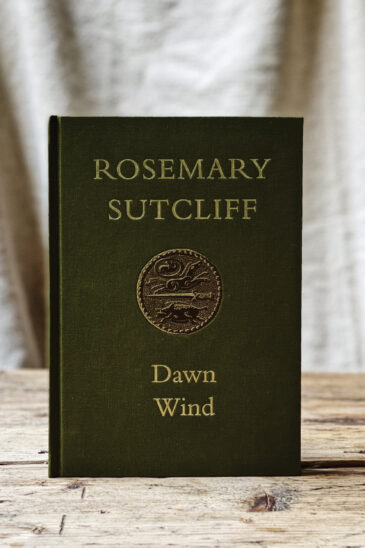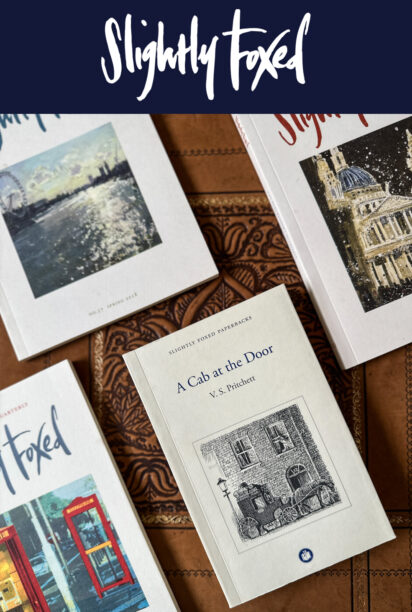The Eagle of the Ninth tells the story of Marcus Aquila, a young centurion on his first command on the fringes of the Roman Empire.
As Marcus arrives in Britain to take up his first command, he is haunted by the memory of his father and the 6,000 men of the Ninth Hispana Legion, who twelve years earlier had marched north of Hadrian’s Wall to quell an uprising and were never seen again. Seriously wounded soon after in an attack by hostile tribesmen, invalided out of the Roman Army and wondering what to do with his life, Marcus determines to make the hazardous journey north in a bid to discover the fate of the Ninth Legion, and in particular of the Roman eagle, the Legion’s standard and a possible rallying point for the northern tribes in their war against Rome. Sutcliff’s most famous book is a gripping adventure and a touching coming-of-age story, based on the real disappearance of the Ninth Legion around the year ad 117.
“Sometime about the year 117 AD, the Ninth Legion, which was stationed at Eburacum where York now stands, marched north to deal with a rising among the Caledonian tribes, and was never heard of again.
During the excavations at Silchester nearly eighteen hundred years later, there was dug up under the green fields which now cover the pavements of Calleva Atrebatum, a wingless Roman Eagle, a cast of which can be seen to this day in Reading Museum. Different people have had different ideas as to how it came to be there, but no one knows, just as no one knows what happened to the Ninth Legion after it marched into the northern mists.
It is from these two mysteries, brought together, that I have made the story of ‘The Eagle of the Ninth’.” – Rosemary Sutcliff
‘Possibly not the very earliest but I can remember Rosemary Sutcliff’s The Eagle of the Ninth with painful clarity. I’m sure that the atmosphere of loss and the deep, melancholic descriptions of the damp landscape of the north set me up for life.’ Edmund de Waal
‘The Eagle of the Ninth is not only a rollicking good adventure, but also a touching and true story about friendship, love and loyalty.’ Charlotte Higgins
‘Book-devouring kids tend not to know Rosemary Sutcliff’s The Eagle of the Ninth trilogy because they were first published so long ago, but her best work is brilliant and has a “not designed for kids” feel that kids often pick up on and appreciate.’ David Mitchell
The Roman Novels by Rosemary Sutcliff
Rosemary Sutcliff (1920‒92) wrote three of her four great historical novels for children set during the last years of the Roman occupation of Britain – The Eagle of the Ninth, The Silver Branch...
Read moreThe Eagle of the Ninth | The dark hour before the dawn
‘The best kind of historical fiction, far too good to be limited to children’s bookshelves’ We are pleased to announce the publication of two new titles in the Slightly Foxed Cubs series of...
Read moreThe Sound of Chariots
Rosemary Sutcliff knew about chariots. In the first of her four Roman books, The Eagle of the Ninth (1954), her young hero, the centurion Marcus Flavius Aquila, politely suggests to his British...
Read more‘These books from Slightly Foxed are like perfect gems.’
‘I have found a book, and three more to follow, which is such a joy and has delighted me so much . . . These books are superbly produced and so elegant to look at and to hold . . . these books from...
Read more‘Reading this book is like returning to an old friend’
Reading this book is like returning to an old friend. I remember reading it as a child . . . Slightly Foxed have re-issued my old friend in a gorgeous new edition – their books are always a...
Read more

















‘Rosemary Sutcliff’s historical novels opened the eyes of a generation of children to the past. They also set a new standard for children’s historical fiction because of their insight, passion and commitment. Sutcliff was a demanding writer who expected a lot from her readers which is why her books are also wholly satisfying for adults. She evokes time and place with an incredibly sure touch and – once she had found her true voice with The Eagle of the Ninth in 1954 – a sharp ear for the dialogue of the past.’
Read Rosemary Sutcliff’s obituary in the Independent
Book-devouring kids tend not to know Rosemary Sutcliff’s The Eagle of the Ninth trilogy because they were first published so long ago, but her best work is brilliant and has a “not designed for kids” feel that kids often pick up on and appreciate.
It is a simply glorious book. In the foreword by the author we are told that around the year AD 117 the Ninth Legion which was stationed near where York now stands, marched north to deal with a rising among the Caledonian tribes and was never heard of again. Eighteen hundred years later during an excavation at Sichester a wingless Roman Eagle was dug up. Nobody knows why it was there just as nobody knows what happened to the Ninth Legion and Rosemary Sutcliff put these two mysteries together and wrote this book . . . I have found a book, and three more to follow, which is such a joy and has delighted me so much.
‘Reading this book is like returning to an old friend. I remember reading it as a child, and every decade or so since then – I’m sure we had it as an audio book we listened to in the car with our children . . . Slightly Foxed have re-issued my old friend in a gorgeous new edition – their books are always a pleasure to read. Beautifully bound, with the original illustrations by C. Walter Hodges (the Roman watchtower on page 216 is really evocative of an abandoned outpost of Empire north of the Wall) . . . I always feel better for reading this book.’ Reverend Peter Barham